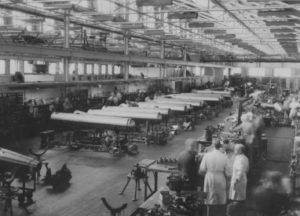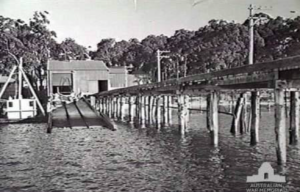By Midshipman Lloyd Skinner, RAN
In 1942, the Royal Australian Navy (RAN) Torpedo Factory, located at Neutral Bay, Sydney commenced operations. Previously, the Torpedo Depot at Garden Island across the Harbour had been the main site responsible for managing torpedo maintenance and storage. Additionally, a torpedo range established at Pittwater in Northern Sydney had responsibility for testing torpedoes from late 1943.
On 22 December 1941 the War Cabinet decided that torpedoes would be manufactured on Australian shores. This decision reflected an expansion of precision mechanical engineering across Australia throughout the Second World War. Historian Stuart Macintyre asserts that Australia was “unable to produce a motor in 1939 yet by 1945 it was manufacturing the most advanced four-engine aircraft.”
Implementation of the Government direction was swift with the Business Board seeking to economize by acquiring an existing industrial facility as the preferred option. Thus, the site chosen for the RAN Torpedo Factory was the defunct North Sydney Gasworks site at Neutral Bay, Sydney.

The RAN acquired the assistance of Mr Essington Lewis, who directed the Department of Munitions during the Second World War and was a managing director at BHP. It was Lewis’ decision to demolish the entire existing infrastructure in Neutral Bay. In keeping with wartime pace, Lewis instigated a meeting at his Melbourne office on Friday and by the evening a contract was signed in which a contractor would begin renovations on the coming Monday. As of February 1943, the RAN Torpedo Factory, in outstandingly short time, had been completed. The factory employed specialist turners and fitters, many from Garden Island who constructed torpedoes with parts acquired from the United States and South Australia.
Two hundred women were also recruited to work in the Torpedo Factory. They filled roles such as machinists and performed detailed work. The employment of women in munitions and factory work represents a growth of women in the workforce during World War Two. In January 1942, the Manpower Directorate had been established with the intention of sanctioning the transfer of workers from non-essential sectors to industries that would directly assist the war effort. As a result, many women, both voluntarily and compulsorily, entered the workforce. Women, in unprecedented numbers were employed in what was contemporarily called ‘men’s work,’ particularly in manufacturing munitions. In 1939, women accounted for just 10% of the munitions workforce, yet by 1943 women constituted 50% of this profession.

Women were also involved in testing of torpedoes at the Pittwater Firing Range. The range was initially surveyed by the RAN Hydrographic Branch. Then followed construction of observation stations, workshops, a pier, target rafts and firing tubes. The first torpedo was ranged on 24 February 1944 when Range Officer, Lieutenant Owens stated that “the performance of this torpedo could not be bettered.” Every torpedo would be tested on the range twice before its deployment on a submarine or warship.
The establishment and operation of the torpedo facility and range is demonstrative of how Australia’s wartime needs culminated in efficient and rapid actions to fill gaps in the nation’s warfighting capability. While the wartime conditions spurred on quick actions to establish and operate the facility, there were minimal short cuts and compromises in the production of munitions by the Torpedo factory and testing processes on the Pittwater range.
Further Reading:
Robert Curran, RAN Torpedo Factory Neutral Bay, RAN Armament Depots Website available at http://users.tpg.com.au/borclaud/ranad/about_rantf.html




